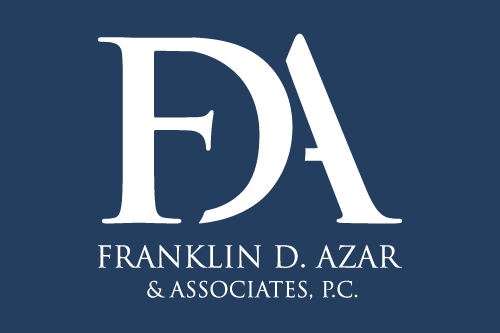There are many types of insurance coverage, so it can be confusing to figure out which coverage is best for you. In Colorado it is legal to drive a car or motorcycle with the minimum liability coverage only, but that does not mean that it is the smartest choice, especially when driving a motorcycle. In 2014 motorcyclists were five times more likely to get injured in a crash than people in passenger cars, and more than 27 times as likely to die in crash. The injuries suffered in a motorcycle crash are much more likely to be serious than in a car crash, and therefore hospital and doctor’s bills will likely be more expensive. This means that you need to know what types of insurance coverage is available for motorcycle riders and how to best to ensure that if you are to get injured in a crash you get the proper treatment and get your bills covered. There are two types of coverage that many people do not completely understand that can extremely beneficial to motorcycle riders:
Uninsured/Underinsured Motorist Coverage
Uninsured/Underinsured motorist coverage is coverage purchased from your own auto insurance company that can cover you when you are injured in a crash caused by another driver. Uninsured motorist coverage covers you when the at-fault driver was driving without insurance. This is very important to have because if the at fault driver has no insurance coverage it can be very difficult to recover payment for your injuries. While it is possible to recover from the at fault driver personally, it is often difficult to do as many people do not have significant assets, and many assets can be protected by legal exceptions and bankruptcy. If you have uninsured motorist coverage, your insurance will pay for your injuries when an accident is caused by an uninsured driver in the same way that their insurance would if they had it. Remember, Uninsured/Underinsured coverage can be purchased at different policy level limits, and with the costs of medical care and severity of injuries likely to be sustained in a motorcycle accident, you should consider purchasing higher than the minimum coverage.
Underinsured motorist coverage covers you when the at-fault driver does not have enough bodily injury liability insurance to cover all of your injuries. Bodily Injury Liability insurance has limits, and the at-fault liability company will only pay up to the amount that their insured driver has purchased. For example, if an at-fault driver has $25,000 limits (the minimum required in Colorado), but your hospital bills are $40,000 dollars, their insurance company will only have to pay $25,000 and you could be stuck with the remaining $15,000 in bills. Underinsured motorist coverage kicks in when there are more damages than liability insurance. In the prior example, if you had underinsured motorist coverage in the amount of $25,000, then your insurance company would pay the outstanding bills (and possibly pain and suffering on top) up to an additional $25,000. Again, because of the cost of hospital and doctors’ visits, and the increased likelihood of serious injury on a motorcycle, you should consider purchasing more than the minimum limits.
Medical Payments Coverage
Medical payments coverage is also purchased from your own insurance company, usually in smaller increments of $5,000. Medical payments coverage can be used in any accident, whether or not you are at fault, and is used to pay for medical treatment. Because it generally covers smaller amounts than Uninsured/Underinsured or health insurance, it should not be used to replace those types of insurance, but is a very useful supplement. For example, say that you are involved in a motorcycle accident that is caused by another driver and you have $5,000 in medical payments coverage. The other driver has liability insurance, but that insurance company will only pay you one lump sum to settle the entire accident, so you wait until you are finished with all your treatment to settle with their insurance company. In the meantime, you have a hospital bill that is going to be covered by your health insurance, but you have a $1500 deductible. You are also going to be doing physical therapy through your health insurance, but each appointment has a $50 deductible. Your medical payments coverage can be used to pay these deductibles or even a whole bill. This can often be the difference in staying afloat and getting the treatment needed to recover from an accident. Unlike the payments that health insurance (and Medicare and Medicaid) pay to treatment providers, medical payments coverage does not have to be repaid out of a settlement. In fact, the Colorado Supreme Court ruled this year in Calderon v. American Family Mutual Insurance that your insurance company, when paying you a settlement out of Uninsured/Underinsured coverage, cannot discount their valuation of your damages by what they already paid in medical payments coverage.
In Colorado, insurance companies have to offer Uninsured/Underinsured coverage and Medical Payments coverage as part of a policy; however an insured can waive purchasing those coverages if done in writing. While we suggest you purchase underinsured/uninsured and medical payments coverage for your car, it is even more important to have it for your motorcycle. It is also important to read your insurance policy carefully if you have cars and motorcycles covered, as some insurance companies will extend some coverage to all vehicles listed on a policy, while others will exclude motorcycles from certain types of coverage unless paid for separately.
Because motorcycle accidents are more likely to lead to serious injuries and therefore more expensive medical treatment, it is more likely that whatever insurance the other party has, if any, will not cover the total amount of your injuries. For this reason you should purchase uninsured/underinsured coverage in the highest limits that you can afford or think are reasonable. It is equally important to have medical payments coverage to pay for deductibles or medical bills as you treat. We love driving motorcycles, but part of driving motorcycles is accepting that we are more likely to get in an accident and possibly get injured. It’s important that we are prepared to deal with those injuries if that time should come.
Other Safety Tips
While insurance is important in order to make sure that your injuries are properly treated and paid for, it would be better not to get in an accident in the first place!
- Wear a helmet: helmets are not required in Colorado unless you are under the age of 17. But research has shown that in nearly 69% of all crashes, a helmet was capable of preventing or reducing head injuries sustained by the rider.
- Wear proper clothing: durable clothing has been shown to substantially reduce the severity of injuries sustained in a crash.
- Wear highly visible clothing: in addition to wearing durable clothing, wear clothing and a helmet that is visible to other drivers. A study in Europe showed that in 69% of multi vehicle crashes involving motorcycles the other vehicle made no attempt to avoid the collision, suggesting that they did not see the motorcycle.
- Take a safety class: safety classes can improve skills and accident avoidance knowledge in riders of all ages and experience levels, and insurance companies will often offer discounts for riders that have taken a class.
- Never drive intoxicated: in 2014 29 percent of motorcycle riders who were involved in fatal crashes had a BAC of 0.08 or more (the legal limit in Colorado).


